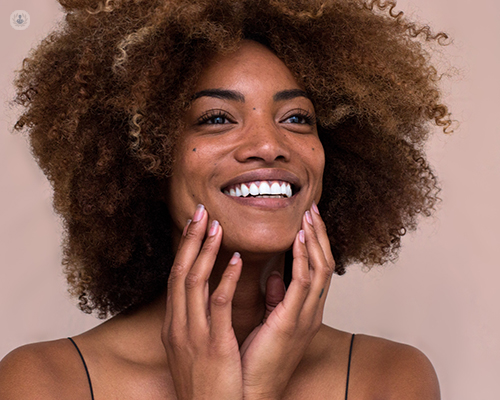Non-surgical facial rejuvenation: what are my options?
Written in association with:Facial rejuvenation and fighting the appearance of age has become more and more commonplace. Often people feel that their aged outer appearance does not reflect who they really are, and hence maintaining a more youthful appearance can help tackle this inner conflict.
If you are interested in achieving a more youthful appearance but do not wish to have surgery, there are a number of non-surgical, minimally invasive procedures that you can consider. Ms Lydia Badia summarises.

-
Topical treatments:
Topical treatments are considered to be the starting point for non-surgical facial rejuvenation, and are popular due to their convenience, low cost and low-risk nature.
There are a lot of products available, which can be confusing and it is advised to consult with a specialist so that a personalised and tailored treatment plan is created to target particular requirements for the patient. You can book an appointment with a specialist here.
Retinoids
- Retinol creams can either require a prescription, for stronger formulas, or can be purchased over-the-counter, for weaker formulas.
- They have been used in the treatment of acne since 1959, and were shown to help with skin rejuvenation in the 1980s.
- Prescription retinol creams are thought to be the most effective topical anti-aging product available.
- Retinol creams work by activating certain retinoid receptors which results in increased collagen synthesis, reduced collagen breakdown and improved elasticity.
- Effects are noticeable from just six months, with longer lasting effects noticeable after a year of use.
Hydroxy acid
- First used by the Egyptians who bathed in sour milk to beautify their skin, hydroxy acid is still used for skin rejuvenation.
- Formulas can be both prescribed, and purchased over-the-counter.
- When applied frequently to aged skin, after several months the epidermis thickens and eventually returns to normal thickness.
- For longer-lasting effects, prescribed formulas with higher concentrations of hydroxy acid are recommended, however, these can cause some skin irritations, which should be monitored.
Vitamins
- Vitamins are also very popular among patients, and are frequently combined with a topical retinoid (vitamin A) cream.
- Vitamin B3 (nicotinamide) cream works to treat acne, as well as reducing sebum production which reduces facial oil and shininess.
- Vitamin C (ascorbic acid) cream is an antioxidant that aids skin rejuvenation by helping with collagen synthesis, as well as preventing excess melanin production, thereby reducing uneven pigmentation.
Chemical peel
- A chemical peel involves the topical application of certain chemicals to the skin to destroy part of the epidermis in a controlled manner.
- Initially, after the procedure, the skin will be inflamed, and then eventually, the tissue will be regenerated, appearing smoother and rejuvenated.
- Peels are recommended to be carried out at two to four week intervals.
-
Botox:
Botox is the name that describes the Botulinum toxin that is used to treat facial expression lines and wrinkles. Botox is administered via the injection of the toxin with a fine needle into the desired parts of the face.
The toxin works to relax the muscles, causing the wrinkles and lines to smoothen out. The effects of Botox last for at least three months, but do wear off. Once the results have worn off, Botox can be re-administered.
When a patient seeks to receive Botox treatment, typically the specialist will use photographs as a means of comparison, so that ongoing treatment can be perfected, for the best possible results.
-
Fillers:
Injectable products which stimulate collagen are the most favoured type of fillers. Products like ‘Ellanse’ collagen stimulator give the most natural refreshed appearance. Fillers are designed to be injected into the layers of skin to help contour the face, and to reduce the visibility of wrinkles and lines. By inserting filler into the skin, the volume lost with age is replaced.
Dermal fillers can be either temporary or permanent, however, permanent fillers are not largely recommended, due to the fact that their longer term safety has not been determined.
Permanent filler uses fat grafting, however, there are a number of problems using fat:
- Fat can grow, and therefore, results may change with time.
- Fat is unreliable – although it is more effective in younger people, sometimes the results of using fat won’t be asymmetric and can appear lopsided.
- Fat can often remove all definition of the face, and as fat is very challenging to remove, these results could be irreversible.
Temporary fillers work by being metabolised by the body. The most popular temporary dermal filler is hyaluronic acid, which is already found in human skin, hence providing compatibility, and behaves very similarly to your own skin tissue. Hyaluronic acid fillers tend to have results that last between six to eighteen months.
How do I know which treatment is best for me?
Facial rejuvenation has many different treatment options, with new therapies being made available frequently. Therefore, deciding what treatment to have can be confusing, although often this decision will be based on cost. However, the best way to decide what treatment plan to follow is to see a specialist, and for them to make a decision based on your face, and what changes you would like to see.



